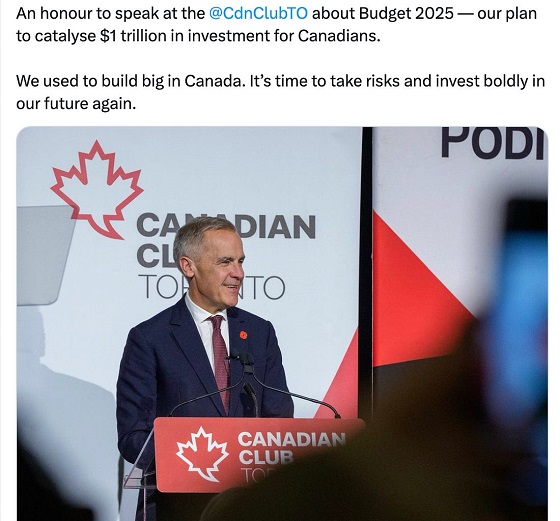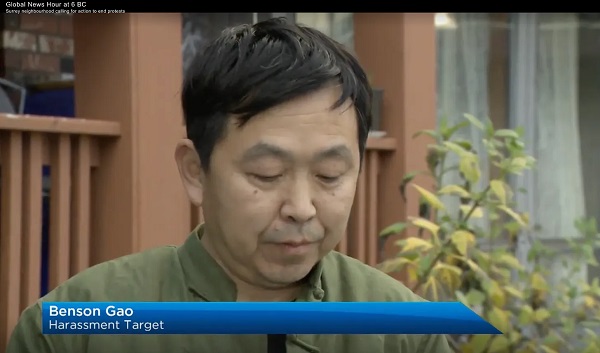National
How Rick Perkins and Larry Brock Revealed a $330 Million Cover-Up While Liberal MPs Run Damage Control
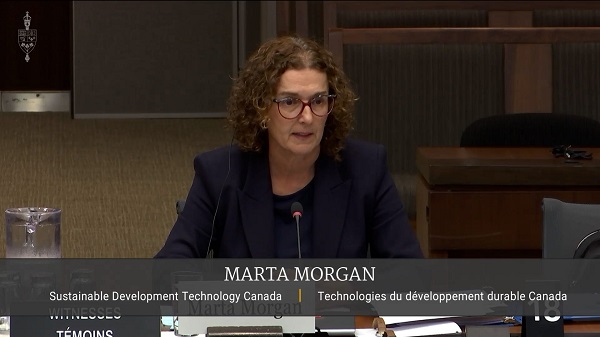
The True Cost of Letting Corruption Slide
Canada’s government is rotting from the inside, and if you needed more proof, look no further than Public Accounts of Canada (PACP) meeting 143. What we witnessed was a showcase of blatant corruption, institutional incompetence, and Trudeau’s Liberal elite running a racket—this time under the guise of environmentalism and “clean tech.” Sustainable Development Technology Canada (SDTC), the so-called green tech fund, has turned into nothing more than a green slush fund used to enrich Trudeau’s cronies while taxpayers foot the bill.
Let’s break it down: Trudeau’s government has turned what should have been a platform to invest in cutting-edge green technology into a cash pipeline for Liberal insiders. The PACP meeting laid bare how $330 million of taxpayer money flowed into conflicted projects approved by board members who had ties to the very companies benefiting from these funds. This isn’t negligence—this is corruption, plain and simple.
The Heroes of Accountability: Larry Brock and Rick Perkins
Two Conservative MPs stood out during this farcical hearing, and thank God they did. Larry Brock and Rick Perkins relentlessly grilled Marta Morgan, the bureaucrat who’s supposed to be in charge of overseeing SDTC. Let’s be real, though—Morgan’s job isn’t about fixing anything. Her role is to protect Trudeau’s insiders, to dodge questions, and to ensure that Canadians never find out the full extent of how deep this rot goes.
Larry Brock didn’t mince words when he compared the SDTC corruption to the Sponsorship Scandal, the Liberal boondoggle from the early 2000s that took down the Martin government. In this case, billions of dollars earmarked for clean technology are being funneled into projects tied to people sitting on SDTC’s board. “This is the sponsorship-style level of corruption within the government, the likes of which we haven’t seen since that scandal,” Brock declared.
Brock’s comparison is spot on. The Sponsorship Scandal was about buying influence with taxpayer money, and SDTC is no different. What’s worse is that this time, it’s all happening under the guise of fighting climate change. Trudeau’s Liberals have mastered the art of using high-minded rhetoric about the environment to hide what’s really happening—a cash grab for Liberal-friendly businesses.
Then there’s Rick Perkins, who absolutely took Marta Morgan to task. He demanded answers about why the SDTC board hadn’t taken steps to recover the $330 million in conflicted transactions. Let’s not forget that Annette Verschuren, former SDTC chair, was found guilty by the Ethics Commissioner for approving $220,000 in funds to her own company. Perkins didn’t hesitate to ask Morgan why the board hadn’t moved to recover this money, despite months having passed since the findings came to light.
“Why have you not taken steps to recover money for the taxpayer? The mandate is there—why aren’t you acting?” Perkins asked pointedly.
Morgan’s response? The same old bureaucratic doublespeak we’ve heard for years. “It has taken a few months for the board to get up and running… We have engaged legal advice,” she said, failing to provide any real answer. That’s not oversight—it’s stonewalling.
Morgan’s Evasion, Liberal Corruption Laid Bare
Morgan’s refusal to answer basic questions about conflicts of interest or the recovery of misallocated funds is exactly what you’d expect from Trudeau’s bureaucrats. When Perkins asked which law firm was advising SDTC on recovering taxpayer funds, Morgan dodged. She refused to name the firm, hiding behind vague references to “ongoing processes.” But let’s be clear here—this is all about protecting the same insiders who enabled this corruption in the first place.
Perkins saw right through it. “Are you getting legal advice as to what process should be followed to recover money? Yes or no? And if you say yes, which law firm is giving you that advice?” he asked, exposing the depth of the cover-up. Morgan couldn’t answer. Why? Because naming the firm would likely reveal the same old swamp creatures, still entangled in this corrupt web of green grift.
This isn’t about oversight or accountability—this is about Trudeau’s Liberals using every trick in the book to protect their insiders.
Redactions, Non-Answers, and Bureaucratic Cover-Ups
But it wasn’t just about recovering money. Larry Brock highlighted the heavily redacted documents that SDTC provided to the committee. He slammed the government for hiding the truth from Canadians, calling the redactions a deliberate attempt to cover up the depth of the corruption. “No small surprise that government departments heavily redacted hundreds of pages… the opposite of transparency and accountability!” Brock exclaimed, expressing the frustration that every taxpayer should feel.
It’s infuriating but not surprising. Trudeau’s Liberals love to talk about transparency and openness, but when push comes to shove, they’ll redact every piece of evidence that exposes their corruption. They know the truth is damning, and they’ll do anything to keep it hidden.
Brock also pressed Morgan on why SDTC continued to take legal advice from Osler, the very firm that helped facilitate the conflicts of interest at the heart of this scandal. Perkins had hammered her on this earlier, and Brock followed up, demanding an explanation for why SDTC hadn’t cut ties with a firm so deeply implicated in the corruption.
Morgan’s response? You guessed it—another non-answer. “Processes are being followed, and we’re looking at legal structures,” she mumbled, refusing to explain why the same law firm that helped create this mess is still providing legal advice. It’s absurd, but it’s par for the course in Trudeau’s Canada.
Liberal MPs Like Iqra Khalid: Protecting the Swamp
Let’s not forget Liberal MP Iqra Khalid, who swooped in during the committee to do what she does best—protect Trudeau’s swamp. Rather than asking tough questions or holding the government accountable, she focused on soft issues like governance improvements and the future of SDTC. Khalid didn’t once mention the $330 million in misallocated funds or the conflicts of interest that allowed board members to enrich themselves.
Instead, she harped on future reforms and administrative improvements, as if that would somehow wipe away the corruption embedded in this system. Khalid is playing a role that every Liberal shill plays—pretend everything is fine, talk about process, and hope that Canadians forget about the billions of dollars being wasted.
The Bigger Picture: SNC-Lavalin Was the Warning
This SDTC scandal is bigger than just the misallocation of funds. It’s a pattern of corruption that’s plagued Trudeau’s government from day one. If you look back, SNC-Lavalin was the canary in the coal mine. That scandal showed us exactly what Trudeau is willing to do—protect his corporate friends at all costs. Trudeau went so far as to pressure his own Attorney General to interfere in a criminal case to help SNC-Lavalin avoid prosecution for bribery.
Back then, Liberal voters shrugged. Trudeau got away with it, and now we’re seeing the consequences. This green slush fund is what happens when corruption goes unchecked. Liberals have become emboldened, knowing that they can use virtue-signaling about the environment to enrich their own, all while claiming they’re saving the planet.
This is what happens when corruption slides.
Energy
A picture is worth a thousand spreadsheets
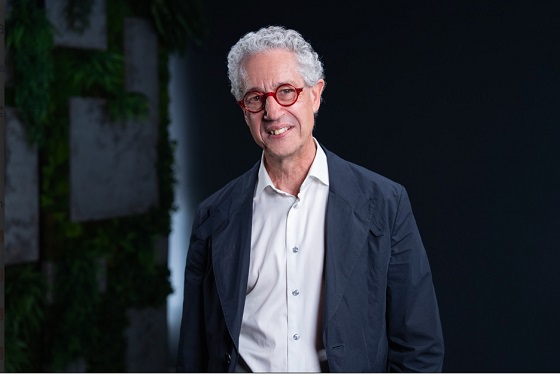
From Resource Works
What if the secret to understanding Canada’s energy future lies not in spreadsheets but in storytelling?
When I think about who has done the most to make sense of Canada’s energy story — not just in charts and forecasts but in human terms — Peter Tertzakian sits near the top of that list. He’s an energy economist, author, and communicator who has spent decades helping Canadians understand the world beneath their light switches and fuel gauges — and why prosperity, energy, and responsible development are inseparable.
Peter is the founder and CEO of Studio.Energy. He is also widely known as the founder of the ARC Energy Research Institute and co-host of the ARC Energy Ideas podcast, alongside Jackie Forrest. Week after week, they unpack what’s happening in the markets, in technology, and in policy, always with the rare gift of clarity. He’s also the author of two influential books, A Thousand Barrels a Second and The End of Energy Obesity, both written long before “energy transition” became a household term.
When we sat down for our Power Struggle conversation, I mentioned how remarkable it is that someone with Peter’s credentials — an economist, investor, and advisor to industry — is also an exhibiting artist whose photography can regularly be found in a gallery in the Canadian Rockies. That’s when he smiled and said what has become one of his signature lines: “I’ve always said a picture is worth a thousand spreadsheets.”

What followed was a fascinating discussion about how visual storytelling can bridge the gap between data and understanding. Peter explained that what began as a hobby has evolved into a personal quest to communicate complex energy subjects more effectively. His photographs, which range from industrial scenes to landscapes shaped by human activity, help connect the emotional and analytical sides of the energy story. The pictures, he said, reveal the same truths that his spreadsheets do — only in a way that more people can feel.
That resonates deeply with what we do at Resource Works — translating complexity into clarity so that Canadians can see how responsible resource development strengthens communities, funds public services, and opens doors for Indigenous partnerships. Like Peter, we believe that understanding energy isn’t about choosing sides; it’s about understanding systems, trade-offs, and the people behind the numbers.
Peter’s concern — and one I share — is how difficult it has become to find truth amid the noise. “People are bombarded by noise, especially today. And not all of that noise is true,” he said. “The challenge now is extracting the signal.” Whether you’re a policymaker, a corporate leader, or just someone trying to make sense of global change, Peter’s approach is to step away from confrontation and toward comprehension. His ability to blend visuals, narrative, and numbers makes complicated issues accessible without oversimplifying them.
Prosperity, Not Population, Drives Energy Demand
Our conversation also turned to the forces shaping global energy demand. Peter reminded me that the biggest driver isn’t population growth — it’s prosperity. “When a person moves from a rural setting to a city, their energy consumption goes up twentyfold, sometimes more,” he said. The story of urbanization, particularly in China, explains much of the past few decades of energy growth. Renewables have slowed that curve, but as Peter points out, “our use of fossil fuels is still growing.”
What I most admire about Peter is that he doesn’t preach. “I don’t have all the answers,” he told me. “My role is to discuss treatment options — not to perform the surgery.” It’s a refreshingly honest stance in a world where too many experts claim certainty.
On Power Struggle, Peter Tertzakian reminded me why he’s so respected across the energy world: he brings intelligence without ego, curiosity without ideology, and a deep respect for the audience’s ability to think. His work reminds us that Canada’s resource story — when told with honesty and creativity — is one of innovation, community, and shared prosperity. And that storytelling — visual, verbal, and numerical — remains our most powerful tool for navigating change.
- Power Struggle audio and transcript
- Peter Tertzakian in Arc Energy Research Institute podcasts
- Peter Tertzakian on X
- Peter Tertzakian on LinkedIn
- Stewart Muir on X
- Stewart Muir on LinkedIn
Power Struggle on social media
Alberta
Federal budget: It’s not easy being green
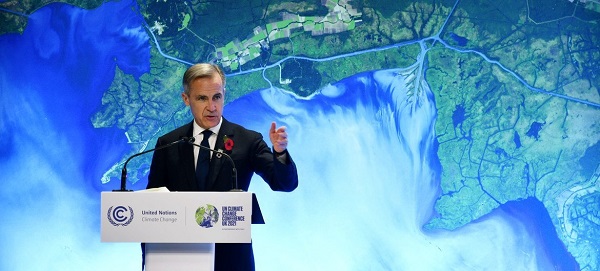
From Resource Works
Canada’s climate rethink signals shift from green idealism to pragmatic prosperity.
Bill Gates raised some eyebrows last week – and probably the blood pressure of climate activists – when he published a memo calling for a “strategic pivot” on climate change.
In his memo, the Microsoft founder, whose philanthropy and impact investments have focused heavily on fighting climate change, argues that, while global warming is still a long-term threat to humanity, it’s not the only one.
There are other, more urgent challenges, like poverty and disease, that also need attention, he argues, and that the solution to climate change is technology and innovation, not unaffordable and unachievable near-term net zero policies.
“Unfortunately, the doomsday outlook is causing much of the climate community to focus too much on near-term emissions goals, and it’s diverting resources from the most effective things we should be doing to improve life in a warming world,” he writes.
Gates’ memo is timely, given that world leaders are currently gathered in Brazil for the COP30 climate summit. Canada may not be the only country reconsidering things like energy policy and near-term net zero targets, if only because they are unrealistic and unaffordable.
It could give some cover for Canadian COP30 delegates, who will be at Brazil summit at a time when Prime Minister Mark Carney is renegotiating his predecessor’s platinum climate action plan for a silver one – a plan that contains fewer carbon taxes and more fossil fuels.
It is telling that Carney is not at COP30 this week, but rather holding a summit with Alberta Premier Danielle Smith.
The federal budget handed down last week contains kernels of the Carney government’s new Climate Competitiveness Strategy. It places greater emphasis on industrial strategy, investment, energy and resource development, including critical minerals mining and LNG.
Despite his Davos credentials, Carney is clearly alive to the fact it’s a different ballgame now. Canada cannot afford a hyper-focus on net zero and the green economy. It’s going to need some high octane fuel – oil, natural gas and mining – to prime Canada’s stuttering economic engine.
The prosperity promised from the green economy has not quite lived up to its billing, as a recent Fraser Institute study reveals.
Spending and tax incentives totaling $150 billion over a decade by Ottawa, B.C, Ontario, Alberta and Quebec created a meagre 68,000 jobs, the report found.
“It’s simply not big enough to make a huge difference to the overall performance of the economy,” said Jock Finlayson, chief economist for the Independent Contractors and Business Association and co-author of the report.
“If they want to turn around what I would describe as a moribund Canadian economy…they’re not going to be successful if they focus on these clean, green industries because they’re just not big enough.”
There are tentative moves in the federal budget and Climate Competitiveness Strategy to recalibrate Canada’s climate action policies, though the strategy is still very much in draft form.
Carney’s budget acknowledges that the world has changed, thanks to deglobalization and trade strife with the U.S.
“Industrial policy, once seen as secondary to market forces, is returning to the forefront,” the budget states.
Last week’s budget signals a shift from regulations towards more investment-based measures.
These measures aim to “catalyse” $500 billion in investment over five years through “strengthened industrial carbon pricing, a streamlined regulatory environment and aggressive tax incentives.”
There is, as-yet, no commitment to improve the investment landscape for Alberta’s oil industry with the three reforms that Alberta has called for: scrapping Bill C-69, a looming oil and gas emissions cap and a West Coast oil tanker moratorium, which is needed if Alberta is to get a new oil pipeline to the West Coast.
“I do think, if the Carney government is serious about Canada’s role, potentially, as an global energy superpower, and trying to increase our exports of all types of energy to offshore markets, they’re going to have to revisit those three policy files,” Finlayson said.
Heather Exner-Pirot, director of energy, natural resources and environment at the Macdonald-Laurier Institute, said she thinks the emissions cap at least will be scrapped.
“The markets don’t lie,” she said, pointing to a post-budget boost to major Canadian energy stocks. “The energy index got a boost. The markets liked it. I don’t think the markets think there is going to be an emissions cap.”
Some key measures in the budget for unlocking investments in energy, mining and decarbonization include:
- incentives to leverage $1 trillion in investment over the next five years in nuclear and wind power, energy storage and grid infrastructure;
- an expansion of critical minerals eligible for a 30% clean technology manufacturing investment tax credit;
- $2 billion over five years to accelerate critical mineral production;
- tax credits for turquoise hydrogen (i.e. hydrogen made from natural gas through methane pyrolysis); and
- an extension of an investment tax credit for carbon capture utilization and storage through to 2035.
As for carbon taxes, the budget promises “strengthened industrial carbon pricing.”
This might suggest the government’s plan is to simply simply shift the burden for carbon pricing from the consumer entirely onto industry. If that’s the case, it could put Canadian resource industries at a disadvantage.
“How do we keep pushing up the carbon price — which means the price of energy — for these industries at a time when the United States has no carbon pricing at all?” Finlayson wonders.
Overall, Carney does seem to be moving in the right direction in terms of realigning Canada’s energy and climate policies.
“I think this version of a Liberal government is going to be more focused on investment and competitiveness and less focused around the virtue-signaling on climate change, even though Carney personally has a reputation as somebody who cares a lot about climate change,” Finlayson said.
“It’s an awkward dance for them. I think they are trying to set out a different direction relative to the Trudeau years, but they’re still trying to hold on to the Trudeau climate narrative.”
Pictured is Mark Carney at COP26 as UN Special Envoy on Climate Action and Finance. He is not at COP30 this week. UNRIC/Miranda Alexander-Webber
Resource Works News
-
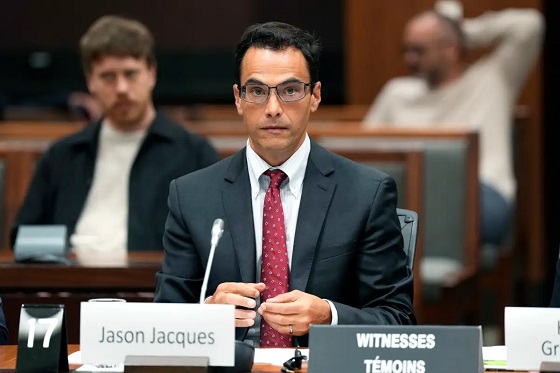
 Business2 days ago
Business2 days agoMark Carney Seeks to Replace Fiscal Watchdog with Loyal Lapdog
-
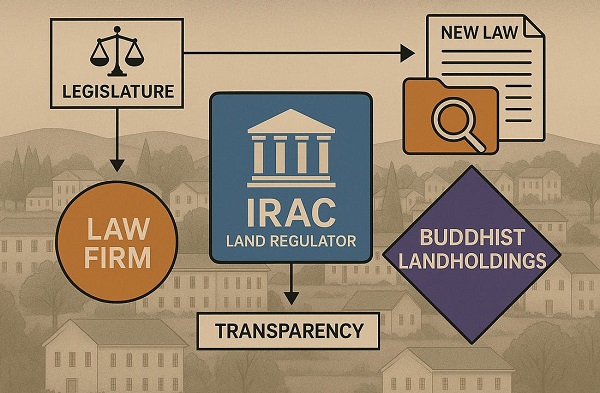
 Business2 days ago
Business2 days agoP.E.I. Moves to Open IRAC Files, Forcing Land Regulator to Publish Reports After The Bureau’s Investigation
-

 International1 day ago
International1 day agoIs America drifting toward civil war? Joe Rogan thinks so
-
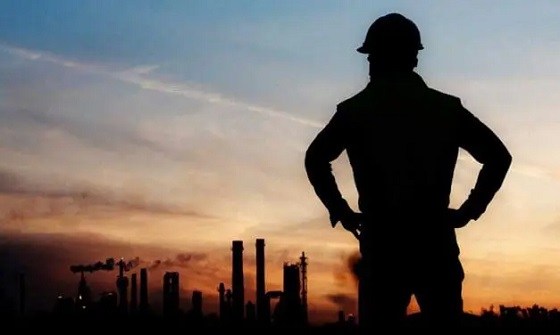
 Energy2 days ago
Energy2 days agoCanada’s oilpatch shows strength amid global oil shakeup
-
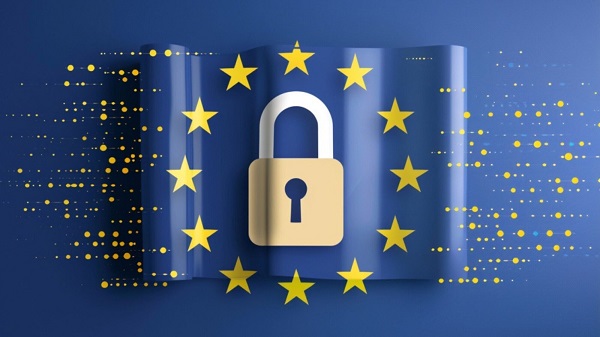
 Censorship Industrial Complex1 day ago
Censorship Industrial Complex1 day agoEU’s “Democracy Shield” Centralizes Control Over Online Speech
-

 COVID-192 days ago
COVID-192 days agoMajor new studies link COVID shots to kidney disease, respiratory problems
-

 Fraser Institute20 hours ago
Fraser Institute20 hours agoCourts and governments caused B.C.’s property crisis—they’re not about to fix it
-

 Alberta18 hours ago
Alberta18 hours agoChatGPT may explain why gap between report card grades and standardized test scores is getting bigger




